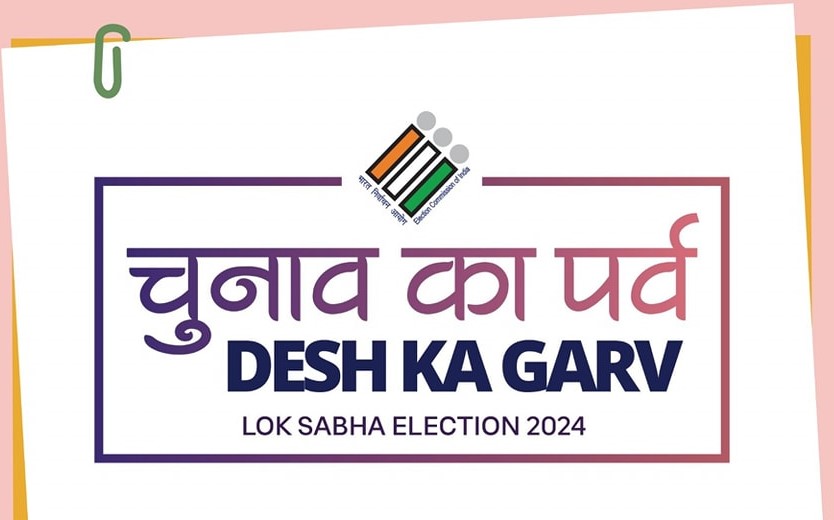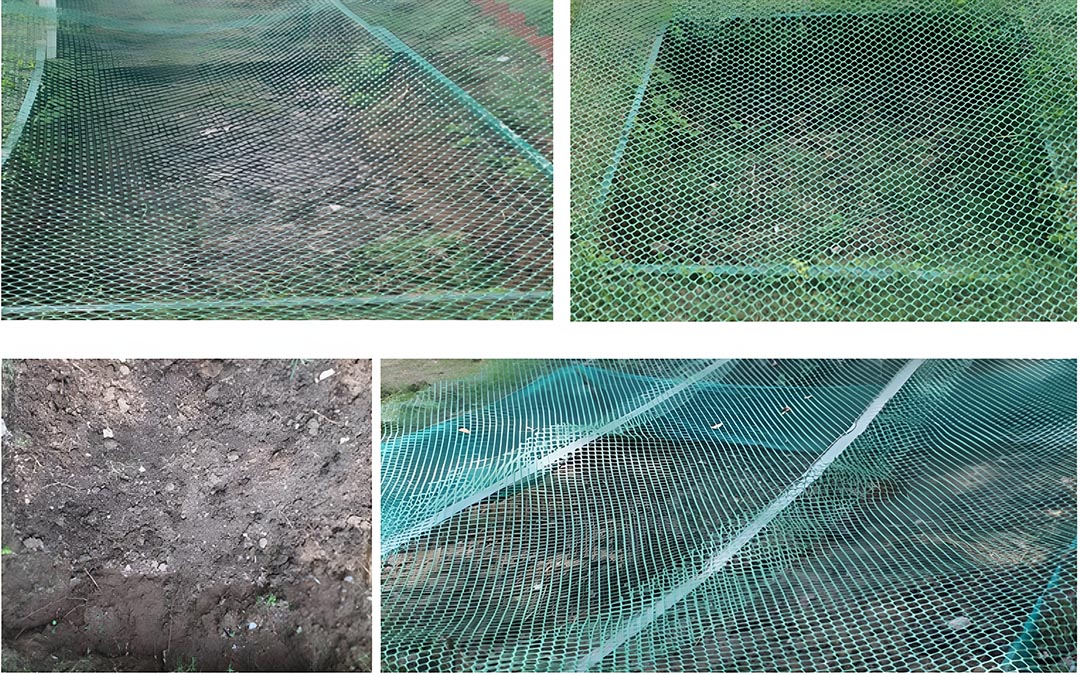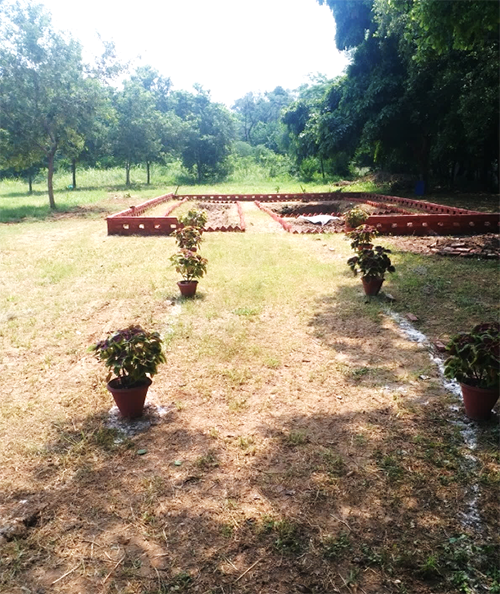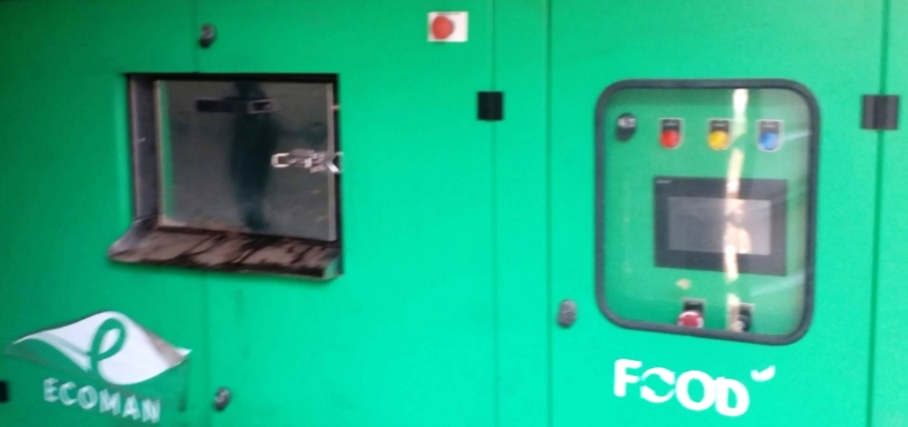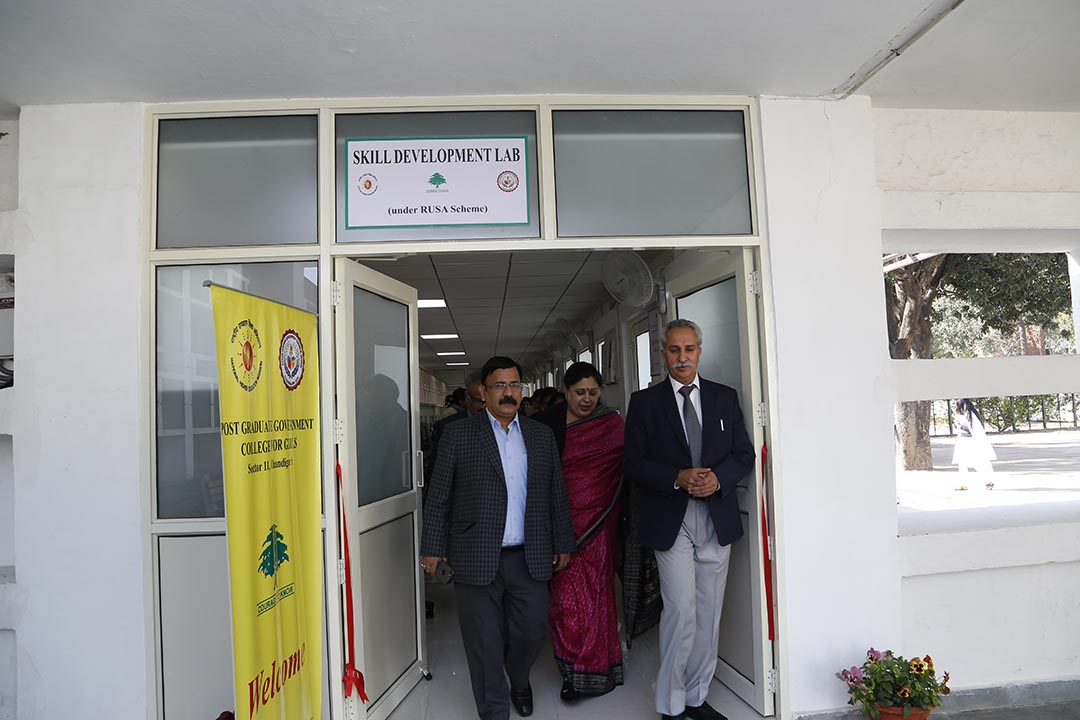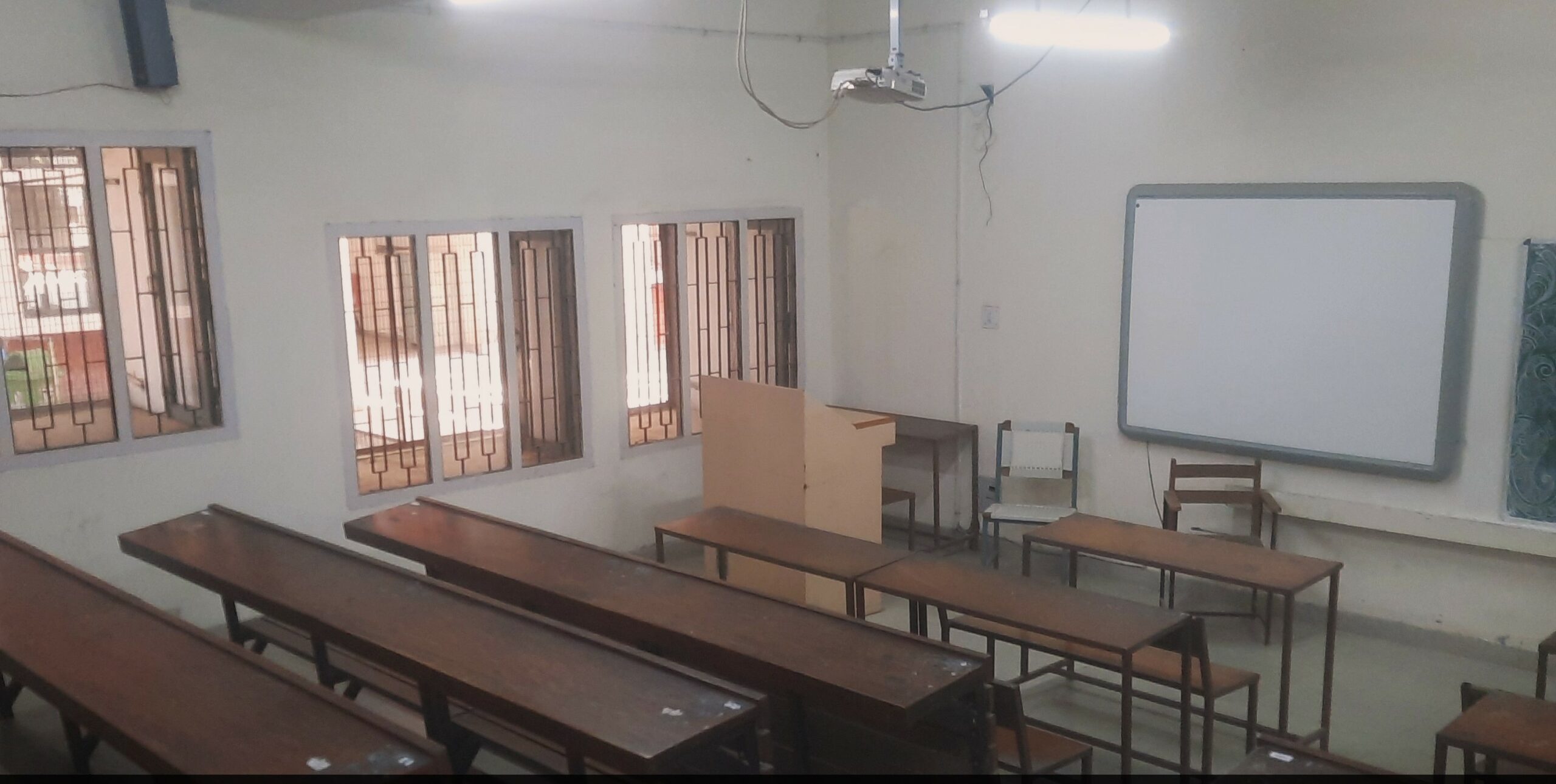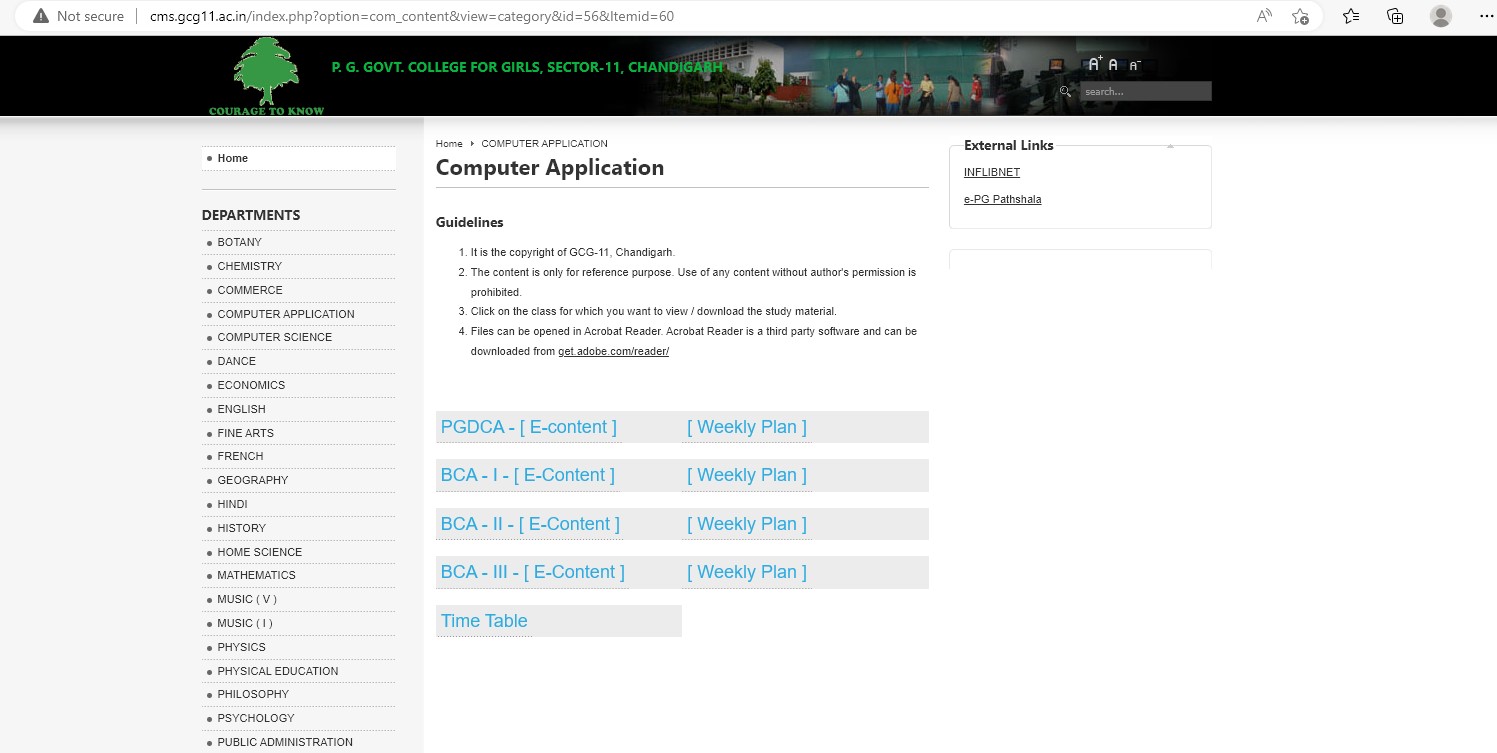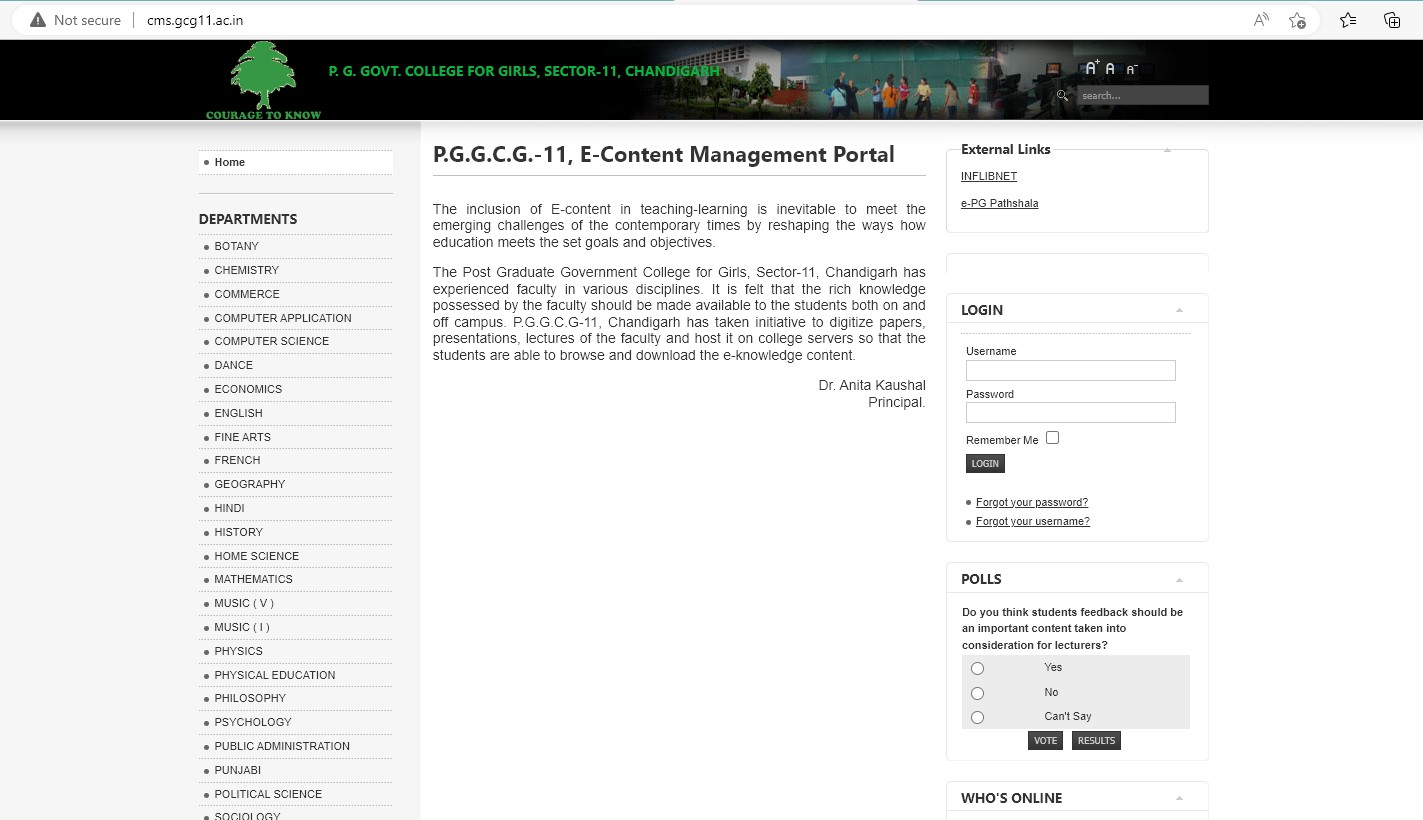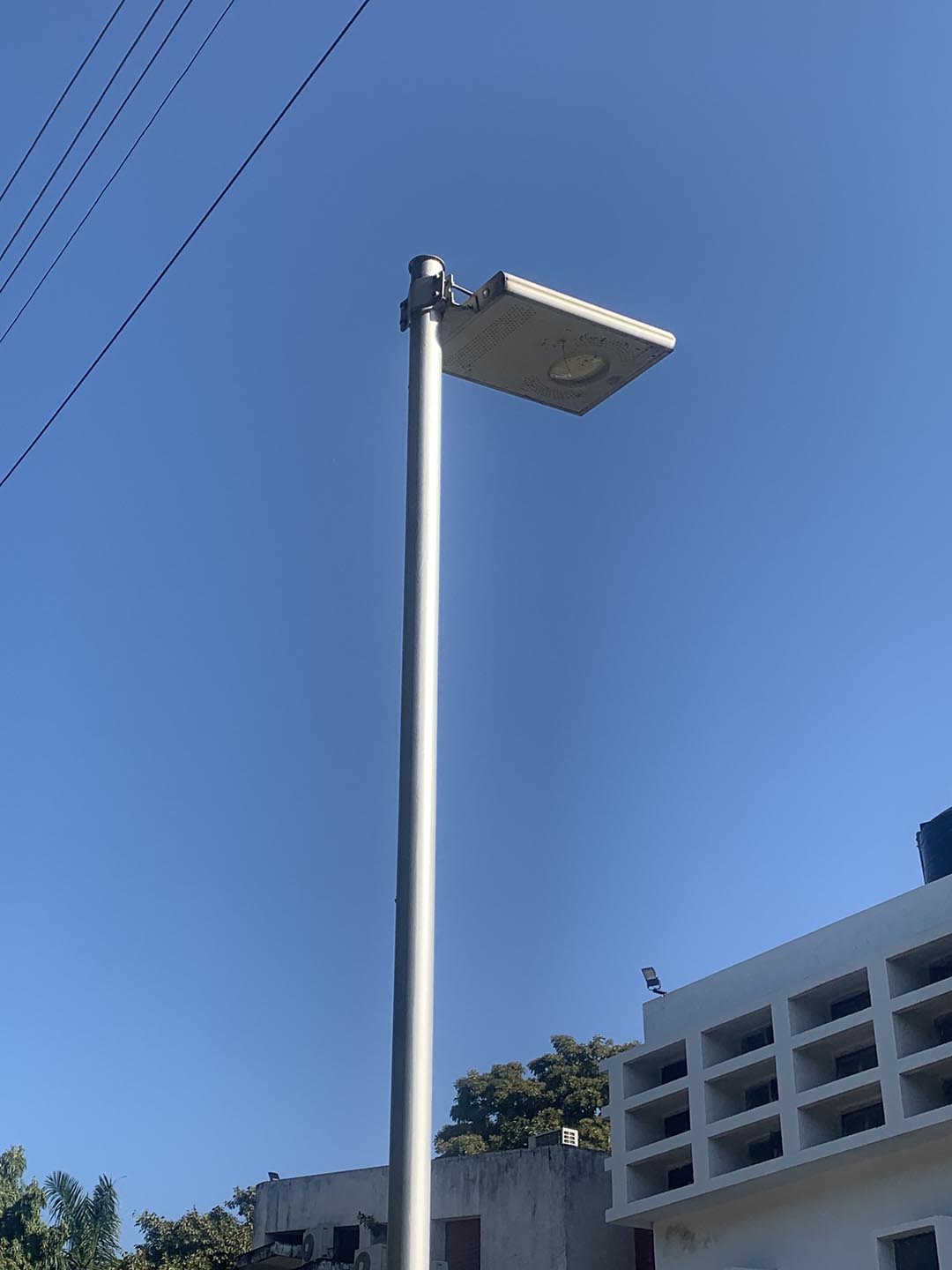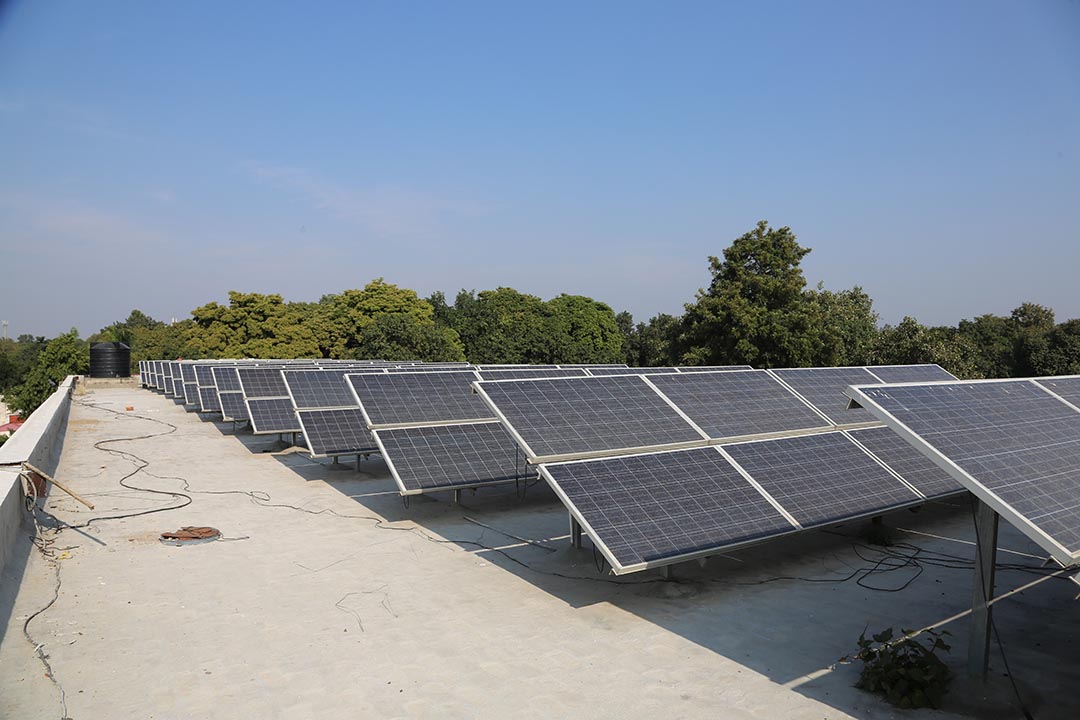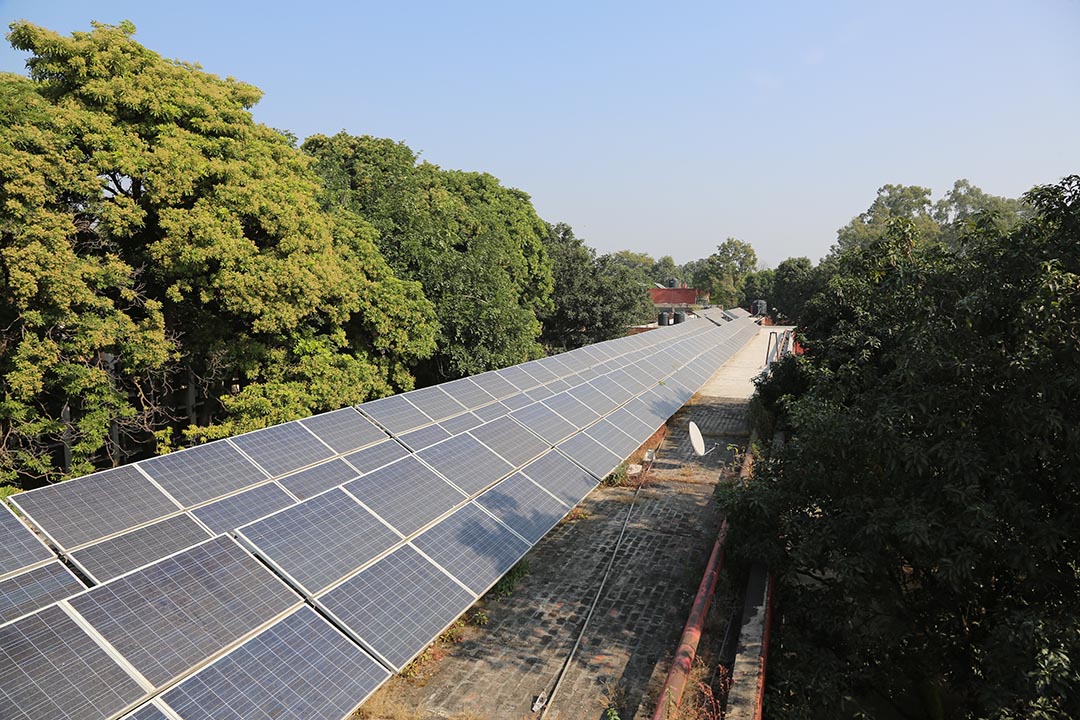Best Practice 1
VERMICULTURE & VERMICOMPOSTING
Aim – To prepare Vermicompost organic manure from Cow dung.
Goal –
- To manage biological laboratories waste.
- To manage paper waste produced.
- To recycle biological waste in scientific way along with the biomass of the college campus viz, leaves, grasses, vegetable waste from home economics department.
To prepare useful organic manure from biological waste and to be used in college Garden.
The context – Biomass and biological waste is a question before the administration. After a gruelling discussion department of Zoology has taken an initiative to run Vermicomposting
project. The concept of green and clean campus is implemented here. The Department of Zoology is practicing vermiculture since 2023 in the college campus as a best practice. The
faculty of this department have organized awareness programs for the students regarding the use of vermicompost than synthetic fertilizers. Resources required: Cement tanks for composting, biodegradable wastes, garden soil, cow dung, hay, earthworms, pots, selected aromatic/medicinal plants.
The Department needs the following things for better results
- Financial assistance.
- Automatic water sprinkling method.
Method of Composting: Four earthern pits are used for vermicomposting. The basal layer of the pit has 3” sand, topped by a layer of garden soil 5”, About 5 kg of cow dung is scattered,
and covered with hay. This set up is kept moist by sprinkling water daily. Organic inputs like flowers, leaves, fruit and vegetable peels and wastes are added separately into the labelled pits and allowed for decomposition. 15 kg earthworms/pit are introduced and the pits are closed with a welded mesh to prevent the entry of predators. Aeration of pits is done with a pitchfork twice a week. The waste is turned upside down fortnightly without disturbing the basal layer (vermibed).The appearance of black granular crumbly powder on top of vermibeds indicate
harvest stage of the compost. Watering is stopped for at least 5 days at this stage. The earthworms go down and the compost is collected from the top without disturbing the lower
layers (vermibed). It takes nearly 3 months to get the compost from this process.
Problems Encountered While implementing this project the Department faced the following problems.
Due precaution is to be taken while Vermicomposting and culturing earthworm species.
i) Keep sufficient organic materials in the culture medium.
ii) Maintain level of moisture by sprinkling water regularly.
iii) All Vermicomposting operations are to be done under the shade. Avoid direct sunlight and heat.
iv) Protect earthworms from their enemies like Lizard, Frogs, Snakes, and Birds etc.
v) During extreme temperatures earthworms move down into the soil and sometimes escape from the tank.
vi) Water logging during rainy season kills the worms.
vii) It is hard to get earthworm from surrounding gardens as the chemical fertilizer reduced their number. During that time, we have to visit villages to collect earthworms in large amount.
Evidence of Success
- The problem of biodegradable waste from the college has been solved.
- The biofertilizer produced is used for the plants in the garden.
- Protection of Vermiculture from ants and birds.
- Scarcity of appropriate seed availability has been solved.
- Approximately 300 students learnt about the basics of Vermicomposting Technology, Entrepreneurship Skill and environmental sustainability.
- A total of 1300 kg of vermicompost was harvested and Rs. 19,500/- was earned by the students by selling vermicompost as a part of entrepreneurship Training program. The amount was deposited in the College Vermicomposting fund for further use.
Contact Details:
Name of the Principal: Prof. (Dr.) Anita Kaushal
Name of the Institution: Post Graduate Government College for Girls Sector – 11 Chandigarh
Work Phone: 0172-2740614 Website: gcg11.ac.in Email: principal_gcg@yahoo.com
Best Practice 2
WASTE TO WONDER TO WEALTH
Objectives
The objectives of this practice are:
- Inculcating the practice of sustainability among the students and faculty. Art from waste is the primary objective of this practice.
- Creatively use waste materials within/around the campus to create objects of utility and decoration.
- Transform waste such as paper, cardboard, wood, glass, plastics, metals and rubber into creative and decorative works of art.
- To make students and faculty aware of the practice of going beyond the conventional recycling of materials by creating objects that exceed the cultural, social and economic value of the original product.
- Inculcate a sense of achievement in the students boosting their self-confidence, feeling of accomplishment there by adding value to their holistic development.
- This Practice aims to nurture and polish the not only the creative skills but also the entrepreneurial skills of the students for futuristic economic self-dependence.
The Context
Using recycling of waste to create art objects comes with its limitations and challenges. The biggest challenge was to overcome the social mind-set as to how something usually discarded can be transformed into creative, useful and functional objects. The major limitation is finding suitable materials that match our vision and requirements.
Another challenge faced is the time and effort spent in identifying, collecting, sorting and cleaning of material to be used. The issues of quality, durability, safety, reuse potential and hygiene of waste/discarded materials are also the major challenges encountered during the process.
The Practice
The students are encouraged to Upcycle waste and create objects of art using discarded/waste material. To achieve this students are given training periodically by way of workshops, expert interactions and professional guidance. Competitions are also held from time to time that encourage students to be innovative and come forward with their creative ideas.
Not only in the Campus, but students continue this practice at their homes as well. They have designed wonderful objects with glass bottles, plastic bags and other waste that would otherwise end up filling landfills or floating in the rivers. Following is the method of reuse and upcycling:
| Waste/Discarded Material | Process | Finished Product |
| Used bottles – of milk, juice, cold drink | cleaning, painting, decoration | flower vase |
| Discarded newspapers from library and hostel | Installation decoration | Departmental Notice Boards, Flowers, Figures and animal structures |
| Package cartons material of cardboard, old unneeded used drawing sheets | Cutting, pasting and colouring | Pen stands, file folders, Book Marks, table calendar stands |
| Old CDs | Pasting and Colouring | Wind chimes and name plates |
| Wooden pieces (unrepairable furniture pieces and doors) | Cleaning and Painting | Decorative Items |
Evidence of Success
- Displayed in Art Exhibition in the college campus every year- A practice that has been functional for the last 15 years and has been up-scaled now.
- Students have started getting orders for decorative
Problems encountered and Resources Required
- Recycling is not always cost-effective
- Many people still prefer to buy new rather than recycled decorative
- Many people think that recycled products don’t have good quality so recycled products still don’t have much durability and demand.
- Basic problem is to counter the social mind-set.
- Commercial viability has to be looked into to upscale it to a commercial and entrepreneurial venture.
Future Suggestions
- Inter-college Competition can be a regular event- with attractive prizes and
- Best entry for most innovative and functional idea to be felicitated and popularised by Director Higher Education/Chandigarh Administration.
- The Chandigarh Administration can fund this project of utilising waste/discarded material into art in the wider interest of the students pursuing the motto of sustainable development.
Institutional Distinctiveness
Sustainable Development and Zero-waste Future
Ever since its inception in 1956, Post Graduate Government College for Girls, Sector 11,Chandigarh has established incredible traditions and legacies by shaping young, impressionable minds, and nurturing them as discerning individuals and empowered nation builders. The tree of our guiding principle, “Courage to Know”, now has deep roots, producing fruits of excellent quality. Living upto the guiding force of the “TREE”, the college has taken all possible steps and initiated all measures aimed at environmental conservation, ecological preservation and sustainable development.
Our record of our overall brilliance is reflected from the assessments and acknowledgements by various authorities – selection under Unnat Bharat Abhiyan by the MHRD, Govt. of India; provisions of grants under DST-FIST; award of Four Star Status (2021) to the Institution Innovation Council; selection by Department of Industries, Chandigarh Administration to conduct Entrepreneurship Development Programmes; Best NSS Unit Award by Panjab University; Best Environment Society Award by the Chandigarh Administration; “Eat Right Campus” certification by FSSAI with Bain-marie, simplest technique where food being heated with hot water to preserve nutrients during reheating, our impeccability has found approvals from local, regional, national and international agencies.
Taking a note of the deteriorating condition of the environment, Government of India is a signatory to many international agreements/declarations/conventions. Our college has been exhibiting sincere commitment to contribute in this direction for the contemporary mankind and for the coming generations as well. Following are the mechanisms that were initiated and have been successfully operationalized subsequently:
- Floristic composition of the campus has more than 88 species with 4,235 trees and shrubs with tree basal cover of 55%, prominent varieties being Banyan (Ficus benghalensis), Gulabi Kachnar (Bauhnia purpurea), Harshingar (Nyctanthes arbor-tristis), Maulsiri (Mimusops elengi), Palash(Butea monosperma), Pilkhan (Ficus infectoria), Silver Oak (Grevillea robusta) and Sitaphal (Annona squamosa). The college also boasts of eight green lawns.
- The demarcated unused land is used for plantation, and mini-forests are created on the campus.
- The total greenery area and Environment services including Rain-water harvesting, Vermi-composting and Windrow composting and Bio-reactor is 52.85%. The fresh water availability is 3,84,600 litres which is twice the availability (189440liters).
- The college is doing Vermi-composting in four beds (10x3x2ft).
- Under dynamic modelling of converting a conventional energy building to Net Zero Energy Building (NZEB) through integration and adoption of new strategies to minimize carbon foot print benefit, a step forward to fight climate change, the college has analysed three aspects to maximize on site renewable energy to reach the net zero energy target. The three aspects are: (i) Solid Waste Management (ii) Solar Grid System (iii) Rainwater Harvesting.
- We have highlighted the mechanism of source waste segregation, adopt schemes for successful co-composting of food, fruit and green waste in 64m2 Windrow composting plant, to mitigate carbon leakage in the campus micro-climate, hence improving building resilience, to achieve de-carbonisation target to limit the campus temperature rise, to meet the goals of the Paris agreement to avoid catastrophic impacts of climate change.
- The concept of circular economy, restorative and regenerative system by design has contributed to a paradigm shift in the transformation of Waste-to-Energy (WtE) by management of municipal solid waste. It entails ascertaining how WtE can serve as a circular economy tool toward carbon foot print benefits and climate change mitigation.
- After solid waste auditing, the wet waste is composited and the organic compost is used in floriculture and landscaping operations. The institute has become organic and successful in achieving carbon footprint benefits.
- In order to improve building resilience, the ‘No Plastic Day’ is celebrated on every Saturday in the institution. We organized a rally in which fifty thousand stakeholders (students, faculty, gardeners, workers) participated and administered oath on July 3, 2021, International Plastic Day. Various competitions (Poster making. slogan and essay writing) were organized to achieve community outreach.
- A 495 KV Solar roof top system was installed on college campus, reducing the electricity usage by 55%, saving 42 metric ton of carbon dioxide. The grid interactive SPV power plant is with 2 battery banks of capacity 120V.
- Solar photovoltaic street lights are also installed in the campus.
- Rainwater harvesting area of 21666.5 Sq.ft generated 140050.6 litres of water recharged to water table through 22 trap units.
- The college has hygienically-maintained toilets with Vendigo-vending machine for sanitary napkins, and incinerators for safe and sustainable disposal of sanitary napkins.
- The college has adopted five villages under Unnat Bharat Abhiyan.
Our initiatives on Environment Sustainability have been recognised nationally and globally which is reflected through the following accolades won by the institution:
- 26th International Congress of IFHE-International Award 2020 in Italy
- United Nations SDG Action Award 2020
- Finalist in UN Green Gown International Awards 2022.
- Innovative Environment Project by CII; 2021 (8th edition) of National Awards
- Green Champion Award–Swachhta Action Plan- Exemplary Performance Award-2020-2021 by MGNCRE, Department of Higher Education, Ministry of Education, Government of India for contribution to Swachhta aspects and practice.
- Recognized as ‘Best Covid Campaign Institution’ in ‘Each one Reach one mission’ by MGNCRE, Department of Higher Education, Ministry of Education, Government of India
- Best Maintained Campus in 47th, 48th and 50th Rose Festival in Section H (Category H3) since 2018 till the present 2022. In this session also the college was adjudged as 2nd-Best-Maintained Campus in 52nd Rose Festival. It is noteworthy that the flowers in the all competitions are raised through waste generated compost, justifying ‘Best of Waste scenario’.
- Adjudged Rank 1 with highest Score (95.5%) in all categories of 35 wards of Chandigarh in the Swachh Ward Survey conducted by Chandigarh Municipal Corporation on the basis of indicators such a waste segregation, adoption of composting, principles for sustainable zero waste micro-climate.
- Outstanding grading in National Rural Institutions Sustainability Grading (NRISG) by MGNCRE, Department of Higher Education, Ministry of Education, Government of India.
- Recognized as a ‘Sustainable Campus’ for adopting the best practices in the areas of sanitation, hygiene, waste management, energy management and greenery management by the Ministry of Education, Govt. of India.
- Certified Member of Global Waste Cleaning Network for the period February 2022 to January 2025.
- Recognition for the promotion of Social Entrepreneurship for Swachhta and Rural Engagement Cell (SES-REC) by Govt. of India.
- Won Gold in the ‘Most Innovative Renewable Energy Programs/Projects in India’ category at 9th International Conference and Exhibition on Smart Energy and Smart Mobility.
- State NSS Award for the Best NSS College Unit.
- Felicitated for successfully completing The Largest Plantation Drive in Higher Educational Institutions.
- Conferred with Certificate of Appreciation for successfully completing The Use of Gandhi Chhadi and Waste Management Swachhta Drive by Government of India.
The college will continue to practice this dedication towards sustainable development in all its future endeavours.
Our initiatives on Environment Sustainability have been recognised nationally and globally which is reflected through the following accolades won by the institution:
- 26th International Congress of IFHE-International Award 2020 in Italy
- United Nations SDG Action Award 2020
- Finalist in UN Green Gown International Awards 2022.
- Innovative Environment Project by CII; 2021 (8th edition) of National Awards
- Green Champion Award–Swachhta Action Plan- Exemplary Performance Award-2020-2021 by MGNCRE, Department of Higher Education, Ministry of Education, Government of India for contribution to Swachhta aspects and practice.
- Recognized as ‘Best Covid Campaign Institution’ in ‘Each one Reach one mission’ by MGNCRE, Department of Higher Education, Ministry of Education, Government of India
- Best Maintained Campus in 47th, 48th and 50th Rose Festival in Section H (Category H3) since 2018 till the present 2022. It is noteworthy that the flowers in the all competitions are raised through waste generated compost, justifying ‘Best of Waste scenario’.
- Recently, Chandigarh Municipal Corporation conducted Swachh Ward Survey on the basis of indicators such a waste segregation, adoption of composting, principles for sustainable zero waste micro-climate. Our college was adjudged Rank 1 with highest Score (95.5%) in all categories of 35 wards of Chandigarh.
The college will continue to practice this dedication towards sustainable development in all its future endeavours.
Audit Reports
Audit Report 2024 |
| ENERGY AUDIT REPORT 2024 |
| GREEN AUDIT REPORT 2024 |
| WATER AUDIT REPORT 2024 |
Audit Report 2023 |
| ENERGY AUDIT REPORT 2023 |
| GREEN AUDIT REPORT 2023 |
| WATER AUDIT REPORT 2023 |
Audit Report 2022 |
| ENERGY AUDIT REPORT 2022 |
| GREEN AUDIT REPORT 2022 |
| WATER AUDIT REPORT 2022 |
